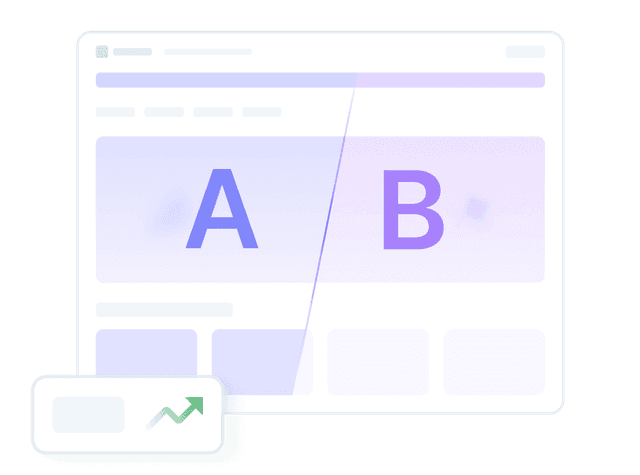Feature flags pros, cons, and alternatives
Feature flags (or feature toggles) allow product teams to control the rollout of new features without redeploying code. They are widely used to enable AB testing, perform gradual rollouts, and reduce risk when releasing new product features.
This article is for product managers, marketers, and developers seeking alternatives to feature flags to reduce reliance on developers for feature rollouts and testing. It's particularly useful for teams aiming to increase agility and scale product optimization without heavy engineering support.
The article presents four alternative solutions to feature flags to help teams iterate faster and scale product optimization: headless CMS with optimization for UI changes, AB testing for experimentation, no-code/low-code for flexibility, and remote config APIs for real-time control.
The most used feature flag solutions
Some of the most well-known feature flag solutions include:
- LaunchDarkly: Enterprise-grade solution with deep analytics, robust governance, and experimentation features.
- Split.io: Strong developer support, best for feature flagging and experimentation, with built-in statistical analysis.
- PostHog: Open-source product analytics with built-in feature flags and experimentation.
- Statsig: Feature management and experimentation with an emphasis on data-driven decision-making.
- Unleash: Open-source and privacy-friendly alternative, good developer experience.
- Optimizely Feature Experimentation: Enterprise feature flagging with a strong focus on AB testing.
But how to choose between them? When evaluating a feature flagging tool, product managers typically consider:
- Ease of use: does it require heavy developer involvement?
- Targeting and personalization: can you segment users effectively?
- Experimentation capabilities: does it support AB testing?
- Pricing: does the cost scale with your usage?
- Self-hosted vs. SaaS: do you need full control or a managed service?
The final answer will depend on your use case, but, in general, these are the most common choices:
- If you need enterprise support, LaunchDarkly, Split.io, or Optimizely.
- If you prefer open-source/self-hosted, Unleash, Flagsmith, GrowthBook, or Flipt.
- If budget is a concern, ConfigCat, Unleash, or GrowthBook.
- If you need AB testing integration, Split.io, Optimizely, or GrowthBook.
- If you want an easy-to-use option, ConfigCat or Flagsmith.
AB testing is essential for optimizing web applications, but choosing the right tool depends on your team’s technical expertise and needs.

What challenges to expect
While feature flags are powerful, they often have a hidden cost: developer reliance. Setting up and managing flags requires engineering support, which means non-technical teams might struggle to make changes independently.
For many product marketers and growth teams, this dependency can slow down iterations and limit the ability to launch and test features at scale.
So, what are the alternatives to feature flag solutions that don’t require constant developer involvement?
Alternative solutions for feature flags without heavy dev work
If relying on developers is a concern, consider these alternatives based on your use case:
1. Headless CMS
For changes related to content, banners, pricing pages, or UI elements, a headless component CMS allows marketing teams to manage and deploy updates without code.
- Best for: product interface components, UI-driven feature releases, marketing site updates, and content experiments.
- Examples: Croct, Contentful, Strapi, Sanity.
2. AB testing and experimentation tools
Instead of feature flags, AB testing tools allow marketers to control rollouts and test variations without developer assistance.
- Best for: gradual rollouts, controlled experiments, and conversion optimization.
- Examples: Croct, VWO, Optimizely, Convert.
3. No-code and low-code app builder
No-code and low-code platforms enable teams to control UI, workflows, and feature access through an admin dashboard.
- Best for: workflow automation, backend feature management, and user access control.
- Examples: Softr, Appy Pie, Glide, Superblocks, Bubble.
4. Remote config APIs
Remote config solutions allow teams to change app behavior dynamically without deploying code.
- Best for: adjusting app behavior, pricing, UI changes, or rolling out new features for specific user segments.
- Examples: Croct, Firebase, AWS AppConfig, VWO Feature Rollouts.
If you’re unsure which alternative fits best, here’s a quick guide:
- If you're mostly making UI/content changes, use a headless CMS.
- If you want to test features without devs, use AB testing tools.
- If you need real-time feature control, use remote config APIs.
- If you want full flexibility, build an internal/MVP product with no-code and low-code tools.
Wrapping up
Feature flags are not the only option for controlling features in a SaaS product. If developer dependency is slowing you down, consider alternatives that empower the product team to iterate faster and scale product optimization.
From headless CMS solutions to AB testing platforms, the right choice depends on what type of feature you need to control—so choose wisely and maximize your agility ;)